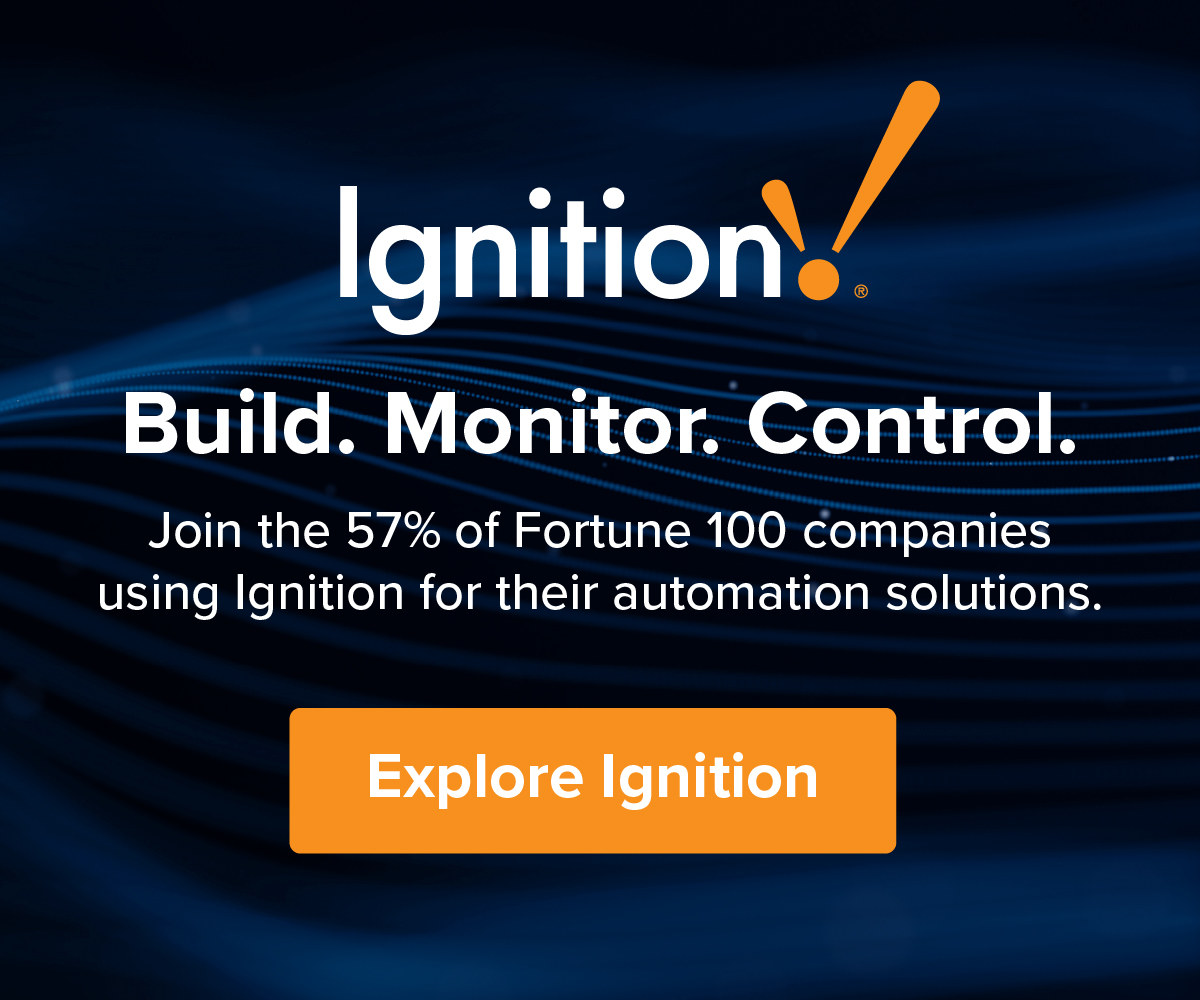by Gary Mintchell | Mar 15, 2024 | Business, News, Sustainability
Completely biodegradable solution to replace conventional petroleum-based plastic bottle cap.
Material science plus manufacturability are providing some really cool sustainability products. One reason dire projections seldom come true—humans are problem solvers. It just takes longer than today’s news cycle to solve some of the problems. We will get there eventually. We always do.
This news comes from a company I’ve just heard about—Beyond Plastic, along with CJ Biomaterials and Techlong International.
Note: Previously I’ve written about PlantSwitch, a company producing plastic tableware from agricultural byproducts. Who’s next?
Beyond Plastic has introduced the first-ever completely biodegradable plastic bottle cap to hit the market. The closure is made from polyhydroxyalkanoate (PHA), a biopolymer created using bacteria fermentation. The new, eco-friendly cap looks, feels, and performs just like traditional petroleum-based plastic caps but brings transformative advantages — it’s recyclable, compostable, and biodegradable even in the most sensitive conditions. The Beyond Plastic bottle cap contains zero microplastics and causes no harm to the environment, unlike traditional plastics.
To make this vision a reality, Beyond Plastic has strategically partnered with two leading value chain giants to make this sustainable solution a success — CJ Biomaterials and Techlong International. “We are proud to be working with Beyond Plastic in the development of this game-changing bottle cap,” said Max Senechal, Chief Commercial Officer at CJ Biomaterials. “As a global leader in the manufacture of PHA, we are committed to introducing revolutionary, eco-friendly solutions to replace traditional plastics. This collaboration with Beyond Plastic is helping to transform the plastics industry with sensible, sustainable technology, and we’re excited about the progressive impact this will have on a commercial scale.”
PHA holds great promise as a solution to the plastic crisis, and greater adoption will necessitate extensive testing and experimentation. To date, integrating PHA into existing systems has not been a straightforward process. Adapting conventional equipment that is typically used for petroleum-based plastics to effectively accommodate PHA adds a layer of complexity.
“Providing a PHA resin is not enough, you have to be able to provide a full turnkey solution that includes the adapted machinery to work with the material as seamlessly as it would running traditional polymers. We approach this as a packaged and complete solution. We are thrilled to help Beyond Plastic on their mission, and we’re excited to see that with our equipment they’re able to make the right modifications that turn PHA into a real-world, viable solution for the marketplace, ” said Keith Boss, CEO at Techlong International, Inc.
“The success of commercializing PHA depends on many factors, one of which is having great partnerships with leaders that both support and promote your vision. That’s exactly what we’ve found with both CJ Biomaterials and Techlong. With their help, leadership, and knack for innovation, we’re poised to revolutionize the plastics industry, help businesses have a positive impact, and significantly reduce plastic pollution, creating a cleaner planet for generations to come — it’s a win-win-win scenario,” said Lance Collins, CEO of Beyond Plastic.
The Beyond Plastic bottle cap is made from polyhydroxyalkanoate, a biopolymer created using bacteria fermentation. The cap contains zero microplastics and causes no harm to the environment.
About Beyond Plastic
Beyond Plastic is creating a more sustainable and eco-friendly future using Mother Nature’s plastic. Our goal is to provide sustainable replacement plastic packaging options by pioneering the first 100% bio-based and 100% RCB — Recyclable, Compostable and Biodegradable — scalable solutions on the market. Beyond Plastic was established by Lance Collins, as a continuation project to Lance’s Carbon Negative ZENWTR beverage brand. The first water brand created using Certified 100% Ocean Bound plastic.
About CJ Biomaterials, Inc.
Headquartered in Woburn, MA, USA, CJ Biomaterials develops meaningful solutions that positively affect our planet, human health and well-being by addressing the challenges posed by plastic waste. The company invents and manufactures biopolymers and bio-based chemicals as part of a long-term vision to create a more sustainable future, by enabling true circular solutions that replace many non-recyclable, non-reusable and fossil fuel-based plastics and chemicals. CJ Biomaterials is a global leader in the manufacture of polyhydroxyalkanoates (PHAs)–both polymers and associated basic chemicals. CJ Biomaterials, a business unit of CJ BIO, is part of CJ CheilJedang, a global lifestyle company with a vision to inspire a new life filled with health, happiness, and convenience.
About Techlong International Inc
Techlong International Inc is a worldwide leading supplier of equipment to the beverage industry. Customized to the needs of the customer our equipment offers the most adapted solutions, first-class product and sustainable packaging answers. Our Jeepine Compression Cap Manufacturing machines complement the other machines in our portfolio aimed at providing our customers with a turnkey bottling factory one-stop solution.
by Gary Mintchell | Mar 7, 2024 | Data Management, Manufacturing IT, News, Operations Management
The first trip I made as a new editor many years ago was to Microsoft to talk with a manufacturing software/PLM developer. PLM being Product Lifecycle Management—that layer of software used to translate CAD into manufacturing. When I covered automation, we didn’t cover this area often. These software companies seldom advertise, so the pressure from sales to cover them was, shall we say, less intense.
Last year I attended three PLM developers either in person or virtually. This year I began receiving more press releases and news from Aras. I told the marketing person that I knew the company but not that well. That led to an invitation to its ACE2024 conference held this week. I learned a ton about Aras and its products and partners as well as seeing two old friends that I never expected to meet there.
Roque (pronounced Rocky) Martin has been CEO for just more than 2 years. Sounds like he’s done well. Aras has been growing lately—61% over 2 years. The company counts 1.7 million registered users. It recently (like many industrial software companies) introduced a Software As A Service (SaaS) product which this year had seen a 77% year-over-year growth.
Setting a context for the event, he discussed three challenges facing the industry:
- Digitalization (silos, distributed, digital thread, connect, collaboration)
- Differentiated Innovation (industry didn’t like customization but discovered that one size fits all is not optimum),
- Accelerated Change
Discussing the change challenge, he listed this industry timeline:
- 1.0 Mechanization (120 years)
- 2.0 Electrification (70 years)
- 3.0 Automation (30 years)
- 4.0 Digitalization (10 years)
- 5.0 Cognitive (coming soon to software near you)
Rob McAveney, CTO, discussed how the coming Cognitive wave including AI will automate away rote tasks humans have done. Or as he put it, AI + Cognitive systems—leverage to describe what is possible and zoom in on potential solutions. He sees the coming 5.0 software leveraging all the data we’ve accumulated from 4.0 for breakthroughs. Some things to watch for in the Cognitive + AI systems:
- AI as an assistant
- Syndicate digital twins
- Connect system of systems
- Able to become increasingly able to suggest more complex solutions
Two interesting pieces of news follows. The first are enhancements to its PLM Platform. You sort of have to see the demos to realize how cool these things are. (Oh, if only I would have had tools like this back in my product development days!) The second announcement relates to a partnership with SAIC. Once again viewing the demos shows the power of this integration. I sat in the breakout presentation to get a dive—but I could never do it justice. If you’re in this area of work, check it out.
Aras Announces Strategic Enhancements to PLM Platform
Expands Digital Thread, Low-Code, and Visualization Capabilities and Adds New Supplier Management Applications
New Digital Thread Capabilities
Aras Innovator forms an extensible digital thread, serving as a data backbone for digital engineering and the broader digital enterprise. New capabilities will support simplified user interactions for viewing, editing, and implementing changes on interrelated items. In addition, a new streamlined experience for configuring connections to a comprehensive range of authoring tools simplifies extending the digital thread to a broader set of enterprise applications.
Extended Low-Code Development Enhancements
Aras Innovator is the only PLM platform with a fully integrated low-code development environment. Leveraging a rich set of development and enterprise-class DevOps services, Aras subscribers can extend applications or develop their own to address the unique needs of their organization. These enhancements introduce new widgets and charts that simplify the user experience and navigation for analytics dashboards and reports embedded in Aras apps. In addition, advanced form design tools facilitate a more streamlined, modern user experience for applications built within Aras-powered applications and deployed within Aras’ DevOps framework.
Powerful Visualization of Complex Assemblies
Aras’ CAD-agnostic approach to 3D visualization has been built on the foundation of the digital thread, enabling users to leverage Dynamic Product Navigation to facilitate the exploration of product data in any representation. The introduction of Aras Advanced 3D enhances this capability, providing a scalable environment to visualize and interact with larger, more complex assemblies that often exceed the capacity of a single CAD session.
Optimized Connectivity and Collaboration with Suppliers
Aras is introducing a suite of supplier management solutions designed to enhance how organizations interact with their suppliers and business partners. These new applications facilitate secure, remote access to controlled subsets of digital thread and PLM information through configurable mobile-optimized web applications. These solutions streamline communication and data sharing to optimize supplier management business processes. Projected availability for Aras Supplier Management Solutions is in Q2 2024, with a preview webinar scheduled for March 26.
SAIC Powers Its ReadyOne Digital Engineering Ecosystem Solution with Aras
Aras, a leader in product lifecycle management and digital thread solutions, today announced a strategic partnership with leading technology integrator SAIC (Science Applications International Corp.) that includes integration of Aras Innovator as the digital thread backbone for its digital engineering solution, ReadyOne.
ReadyOne is SAIC’s rapidly deployable digital engineering ecosystem, which offers customers an end-to-end digital thread for consistent, traceable, and complete engineering solutions. By using Aras’ product lifecycle management (PLM) technology as its foundation, the solution creates a single-source-of-truth for users, letting them access any and all needed information, at any point in the engineering process, all from a common platform. With ReadyOne, collaboration and transparency are increased, while risks and costs are decreased.
by Gary Mintchell | Mar 1, 2024 | Business, News, Security
New OT threat groups include VOLTZITE linked to Volt Typhoon; ransomware attacks grew 50 percent; state actors and unsophisticated hacktivist groups gained ground against OT systems.
Cybersecurity companies busily conduct surveys and issue reports. This news concerns Dragos’ release of its sixth annual OT Cybersecurity Year in Review report.
The report named the emergence of three new threat groups, including VOLTZITE linked to Volt Typhoon, and found that ransomware continued to be the most reported cyber threat among industrial organizations with a nearly 50% increase in reported incidents. 2023 also saw the first time a hacktivist group achieved Stage 2 of the ICS Cyber Kill Chain.
Based on data gathered from annual customer service engagements conducted by Dragos’s cybersecurity experts in the field across the range of industrial sectors, the top challenges industrial organizations need to address are:
- Lack of Sufficient Security Controls: 28% of service engagements involved issues with improper network segmentation or improperly configured firewalls.
- Improper Network Segmentation: Approximately 70% of OT-related incidents originated from within the IT environment.
- Lack of Separate IT & OT User Management: 17% of organizations had a shared domain architecture between their IT and OT systems, the most common method of lateral movement and privilege escalation.
- External Connections to the ICS Environment: Dragos observed four threat groups exploiting public-facing devices and external services and issued findings related to externally facing networks such as the internet in 20% of engagement reports.
by Gary Mintchell | Mar 1, 2024 | Asset Performance Management, News, Operations Management
Every time I participate in a survey the last page is an invitation to do my own survey. I think every industry marketing person has take them up on the offer. Limble CMMS has released State of Manufacturing and Facilities Maintenance Report, which reveals insights from manufacturing and facility maintenance professionals on the top challenges they face today and what their immediate focus is on. Some of these are no-brainers; but some are interesting.
Some key stats from the report include:
- To embrace a shift toward advanced technologies, 91% of manufacturing professionals said they are shoring up their data collection and analysis capabilities. Machine sensors and IoT technology are important tools for the consistent and accurate data collection needed to leverage advanced technologies.
- More than half (51%) of respondents chose excessive downtime, aging infrastructure or workforce issues (e.g. lack of skilled workers) as one of their top three current challenges
- In addressing downtime issues, 78% of respondents say they are supporting preventive maintenance initiatives
- In addressing workforce challenges, 55% of respondents say they are focusing on recruitment and retention, and 52% are looking to increase pay and benefits for workers.
- Proactive maintenance (72% of respondents) and investing in new equipment (69% of respondents) are the top two ways in which respondents are addressing the issue of aging infrastructure.
- 69% of manufacturing and facility maintenance professionals said they are focused on diversifying suppliers to address challenges within their supply chain.
by Gary Mintchell | Feb 29, 2024 | News, Security
Tenable One has some news today about the release of Tenable One. It is a visibility product that allows managers and others to see assets across an enterprise regardless of IT, OT, or IoT. You will notice a new marketing term in the release—at least new to me. The company is now called an “Exposure Management” company. They tell me that means it enables organizations to understand cyber risk in order to make more effective business decisions.
Tenable, the Exposure Management company, announced February 29, 2024 the release of Tenable One for OT/IoT. It is the first and only exposure management platform that provides holistic visibility into assets across IT and operational technology (OT) environments.
I cannot verify the “first and only” claim, but companies are often careful to define things such that they can make the claim. In this case, exposure management most likely is the key phrase (before anyone writes to me). Also they talk management. What they do is provide information for managers to be able to take informed actions.
Tenable One for OT/IoT extends visibility beyond IT, to include OT and IoT, and helps security leaders gain a clear picture of true exposure across their entire attack surface. This first-of-its-kind approach allows organizations to prioritize security risks wherever they reside – be it in the cloud, data center, or the OT environment – and most importantly, to understand how these risks create attack paths across their infrastructure.
Users can also view their global exposure, including OT assets, to see how their security posture compares to other companies in their industry and gain additional insights from their OT assets to make better decisions, faster.
Three key points:
- Comprehensive visibility beyond the IT environment to the modern attack surface
- Risk intelligence to mitigate operational risks
- Actionable planning and decision making across enterprise and critical infrastructure environments
by Gary Mintchell | Feb 27, 2024 | Business, News, Sustainability
Here is one of my favorite companies—using “waste” bioplastic to mold those plastic eating utensils ubiquitous in fast food restaurants and picnics. They have a small operating plant and just closed an $8 million round to increase production. How many more energy and resource saving ideas are lurking out there in the minds of my readers?
PlantSwitch has developed revolutionary bioplastic technology that converts cellulosic agricultural waste streams into a low-cost, compostable plastic resin alternative. As bans on single-use plastic are increasing globally and major corporations are searching for ways to reduce their plastic footprint, PlantSwitch is uniquely positioned to provide a compostable, cost-effective alternative to conventional plastic that is both sustainable and scalable.
“Alternatives to plastic have traditionally failed to deliver on cost, quality, and availability,” shares CEO and Founder Dillon Baxter. “PlantSwitch was founded with the mission to deliver a bioplastic alternative that can replace all traditional single-use plastics. To do that, the technology must be low-cost, high performance, and rapidly scalable; and those 3 tenets have guided every decision our development team has made since inception.”
Proceeds from this raise will be used to launch PlantSwitch’s first commercial manufacturing facility in North Carolina and expand its team. At scale, the 52,000 sq ft facility is expected to produce over 50M lbs of bioplastic resin annually. PlantSwitch’s customers include some of the leading brands and manufacturers in foodservice, CPG, cosmetics, and agricultural products, and the company expects this facility to reach its capacity in 2025. PlantSwitch currently has 12 employees, primarily chemical engineers and polymer scientists that have made significant contributions to the field of sustainable materials.
Aligned with PlantSwitch’s vision, NexPoint Capital is a large institutional investor with a climate tech platform, where they allocate early-stage capital to climate-smart technologies that will require significant infrastructure to scale. NexPoint currently holds over $16 billion in assets under management.
“At NexPoint, we are always looking to support companies that do important work, and offer attractive opportunities for growth,” said Scott Johnson, Managing Director & Portfolio Manager at NexPoint Capital. “PlantSwitch certainly fits that bill and represents an investment that aligns with our values and expertise in Climate Tech businesses.”
PlantSwitch is now gearing up for its 2024 Series A fundraise, which will be used to expand capacity with additional manufacturing facilities.
“Major corporations have made commitments to lower their plastic consumption and the toxic waste it produces, but the proper infrastructure to deliver a viable alternative hasn’t existed,” says PlantSwitch CEO Dillon Baxter. “This $8 million raise, in partnership with NexPoint, is being invested in building out this infrastructure, which will drive the alternative plastics market forward.” In conclusion, Baxter adds, “We believe the infrastructure for compostable bioplastics is critical to the future of our economy, our health, and our planet. That’s why we are on a mission to build it in a way that is scalable and cost competitive.”





